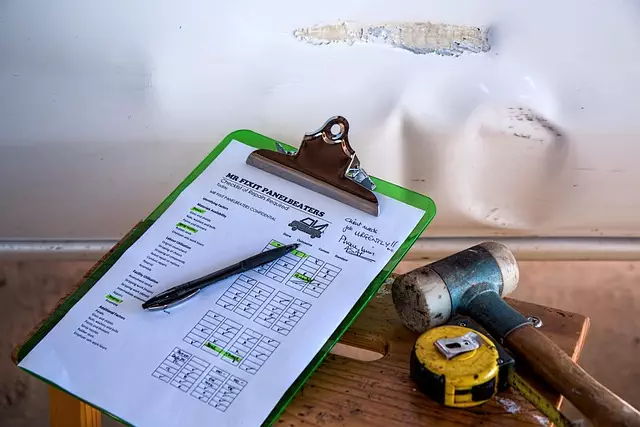Understanding and lowering your auto insurance premium involves several steps. Key factors influencing rates include driving history, vehicle type and safety features, location, age and gender, and coverage chosen. To reduce costs, maintain a clean driving record, adopt safe driving practices, insure fuel-efficient vehicles with anti-theft devices, live in low-risk areas, bundle policies, shop around for quotes, adjust policy settings like deductibles and limits, leverage advanced vehicle safety features, and regularly review your policy to stay informed and make necessary adjustments. By implementing these strategies, you can effectively lower your auto insurance premium while ensuring adequate coverage.
Looking to lower your auto insurance premium? This comprehensive guide reveals effective strategies to save on your policy. From understanding the factors influencing your premium, such as driving history and vehicle type, to leveraging discounts and adjusting coverage limits, you’ll discover a step-by-step approach to managing costs. Regularly reviewing your policy ensures optimal savings. Implement these tips to navigate the market efficiently and secure affordable auto insurance tailored to your needs. Learn how to make informed choices and reduce your How to Lower Your Auto Insurance Premium.
Understanding Your Auto Insurance Premium: Factors That Affect Cost

Understanding your auto insurance premium is a crucial first step in learning how to lower your auto insurance premium. Your insurance rate is determined by a complex interplay of various factors, many of which are within your control. By recognizing these elements, you can make informed decisions to save money on your car insurance.
Key factors that affect your cost include your driving history, vehicle type and safety features, location, age and gender, as well as the level of coverage you choose. A clean driving record, for instance, will lead to lower rates compared to one with accidents or violations. Similarly, insuring a fuel-efficient or hybrid vehicle, installing anti-theft devices, and living in a lower-risk area can all contribute to reduced premiums. Age and gender also play roles, with younger drivers often facing higher rates due to inexperience, while women generally pay less than men. Lastly, the type of coverage you select—such as liability only versus comprehensive—significantly impacts your premium.
Evaluating Your Driving Habits and History

Evaluating your driving habits and history is a crucial step in learning how to lower your auto insurance premium. Insurers consider various factors when calculating rates, including your claim history, driving record, and even how often you drive. By understanding these aspects of your behavior behind the wheel, you can make informed changes to potentially reduce costs. For instance, if you have several tickets or accidents, improving your safety measures and defensive driving skills could lead to lower rates over time.
Regularly reviewing your driving habits is also beneficial. This includes assessing your mileage, as driving less generally translates to cheaper insurance. Additionally, consider the type of vehicle you own; switching to a safer, more fuel-efficient model might earn you discounts. Keeping a clean driving record and making smart choices on the road can significantly impact your ability to lower your car insurance rates.
Shopping Around for the Best Coverage and Rates

Shopping around for car insurance is a straightforward yet effective way to lower your auto insurance premium. The process involves comparing quotes from multiple insurers, ensuring you get coverage that meets your needs at a price that suits your budget. Online platforms and comparison tools make this task easier by allowing you to input your details once and receive offers from various companies. Take the time to evaluate each quote, considering not only the cost but also the level of coverage offered, deductibles, and any additional benefits or perks included.
By shopping around, you can uncover significant variations in pricing for similar policies. Insurers use different criteria to determine premiums, including your driving history, vehicle make and model, and location. Understanding these factors can help you make informed choices. For instance, insuring a safer vehicle or completing a defensive driving course could lead to lower rates. Be sure to read the policy details carefully, checking for any exclusions or limitations that might affect your coverage.
Utilizing Discounts and Benefits Offered by Insurers

Many insurance companies offer discounts and benefits that can help lower your auto insurance premium. One common discount is for safe driving, where policyholders with clean records or those who complete defensive driving courses may be eligible for reduced rates. Another often-overlooked benefit is bundling policies, which involves combining your auto and home insurance under one provider. This strategy can lead to significant savings as insurers often offer discounted rates for multi-policyholders.
Additionally, comparing quotes from different carriers regularly can help you take advantage of new promotions or changes in the market. Insurers frequently update their pricing structures and special offers, so staying informed allows you to switch policies or negotiate better terms with your current provider to lower your auto insurance premium effectively.
Adjusting Your Policy Limits and Deductibles Strategically

When looking to lower your car insurance rates, one effective strategy is to adjust your policy limits and deductibles. Increasing your deductibles can significantly reduce your auto insurance premium. Deductibles represent the amount you pay out-of-pocket before your insurance coverage kicks in. By opting for a higher deductible, you share more of the financial burden with the insurer, which can lead to lower monthly premiums. However, ensure that the increase aligns with your financial comfort level and the potential out-of-pocket cost in case of an accident.
Additionally, reviewing your policy limits is crucial. Policy limits define the maximum amount your insurance will cover for specific damages or injuries. Lowering these limits can decrease your auto insurance premium since you’re essentially reducing the total risk exposure for the insurer. However, it’s essential to ensure that the chosen limits comply with local legal requirements and provide adequate coverage for potential risks on the road.
Considering High-Tech Devices and Safety Features

In today’s digital era, many cars are equipped with high-tech devices and advanced safety features that can significantly impact your auto insurance premium. These innovations aren’t just for luxury vehicles; even mid-range models often come with driver assistance systems like automatic emergency braking, adaptive cruise control, and lane departure warnings. Such features demonstrate a car’s ability to prevent accidents, which insurers see as a positive factor when calculating premiums. By installing these technologies, you’re essentially showing insurance companies that your vehicle is less likely to be involved in a collision.
When shopping for a policy, make sure to inform your insurer about any high-tech safety features your car has. Some companies offer discounts specifically tailored for vehicles with these advanced systems. Remember, not only do these devices help lower your how to lower your auto insurance premium, but they also contribute to safer driving conditions, providing peace of mind on the road.
Reviewing and Updating Your Policy Regularly for Savings

Regularly reviewing and updating your auto insurance policy can be a great way to save on your premiums. Insurance companies often base their rates on various factors, such as driving history, vehicle make and model, and even your age and gender. By keeping an eye on these factors and making necessary changes, you can significantly reduce your auto insurance costs. For instance, if you’ve gone several years without any accidents or violations, inform your insurance provider to reflect this improved risk profile in your policy. Similarly, if you own an older vehicle that’s less valuable, consider lowering the coverage limits to save on comprehensive and collision insurance, assuming your car isn’t a classic or has sentimental value.
Additionally, comparing rates from different insurers periodically can help you find better deals. Different companies weigh factors differently, so switching providers or negotiating with your current one could lead to substantial savings on your auto insurance premium. Remember, staying informed about the market and adjusting your policy accordingly is key to managing your auto insurance costs effectively.



